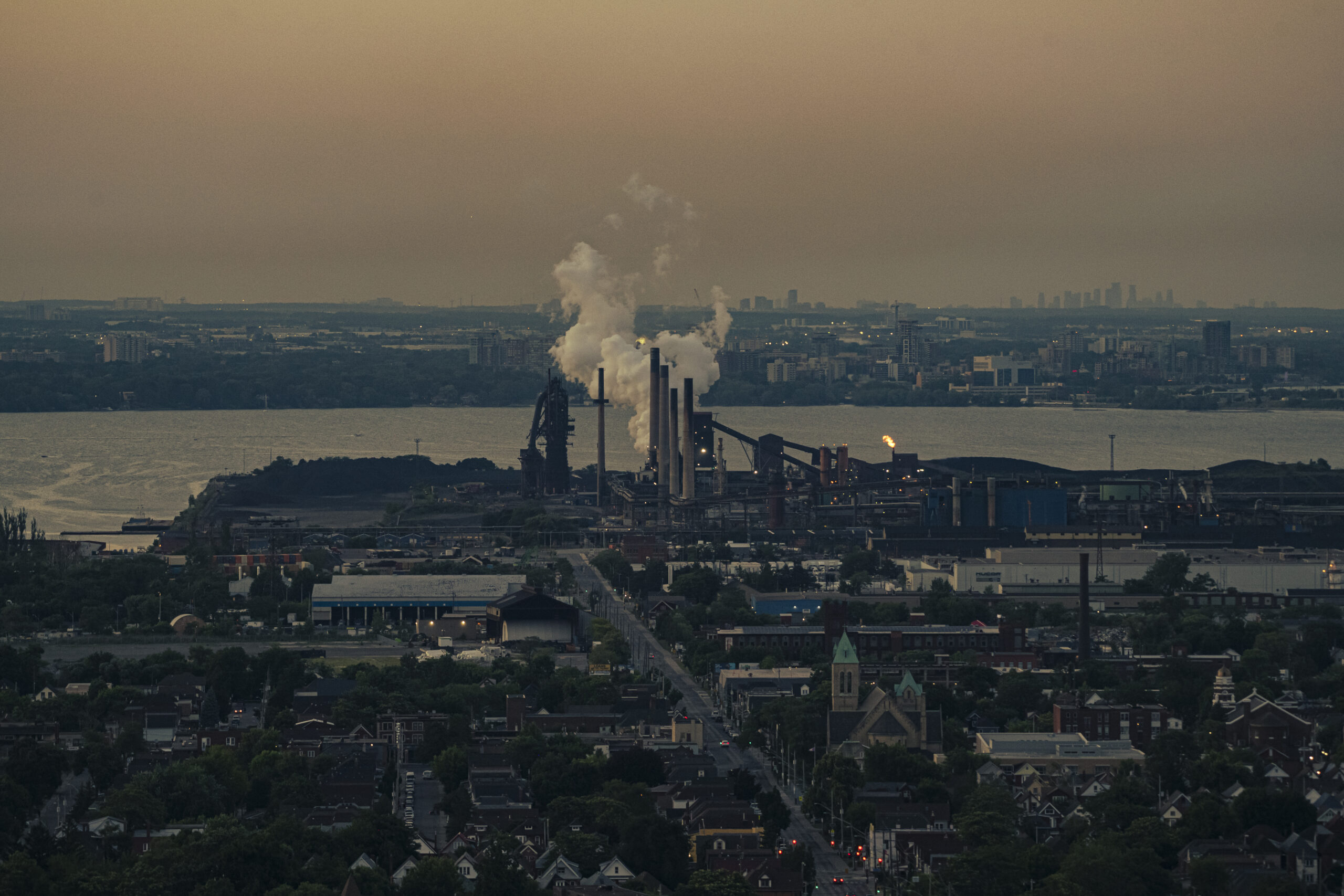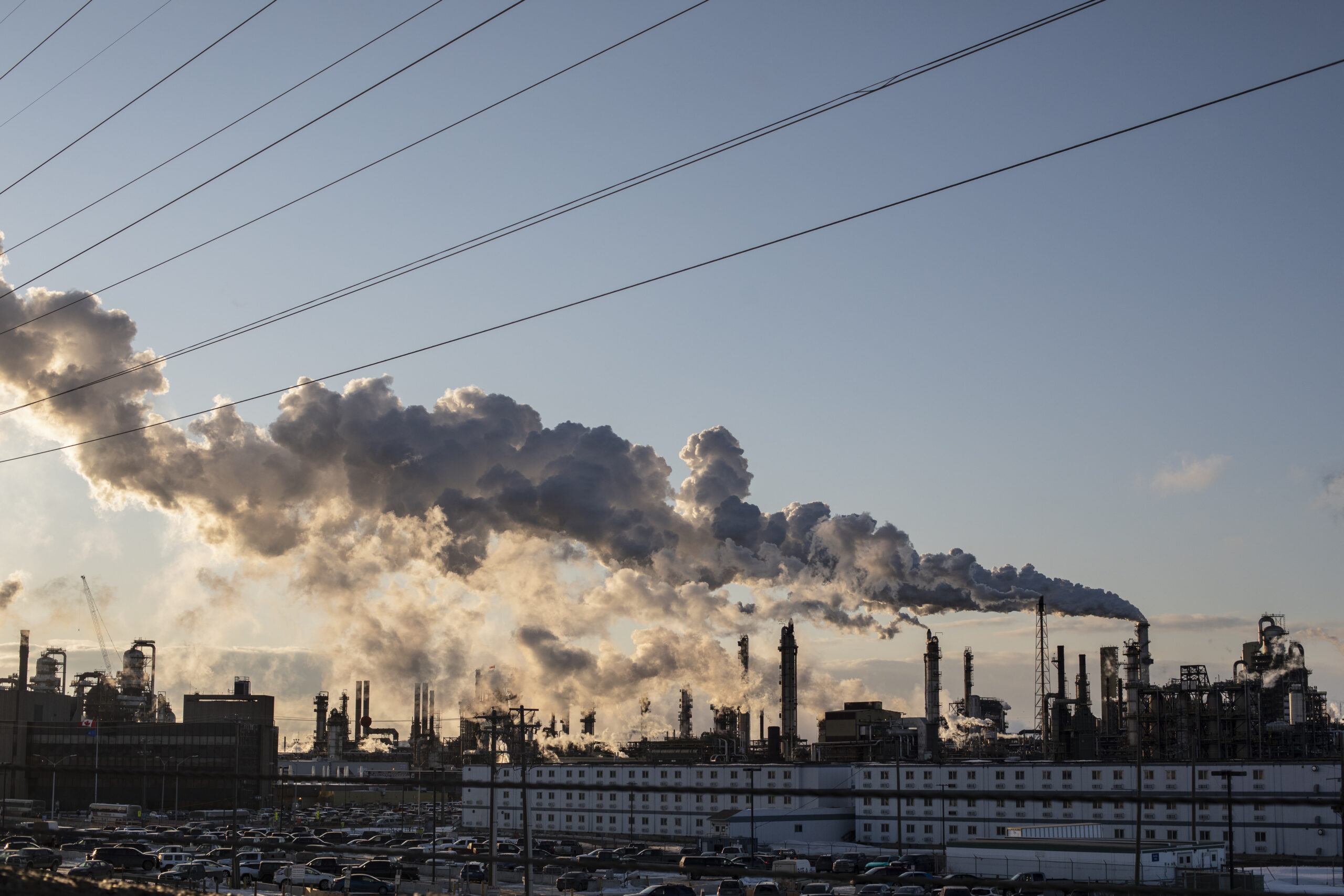
B.C. has a new policy for staking mining claims. Why doesn’t anyone like it?
B.C. previously allowed mineral claims without First Nations consultation. It was court-ordered to fulfill its...
Get the inside scoop on The Narwhal’s environment and climate reporting by signing up for our free newsletter.
On March 17, federal Conservative Leader Pierre Poilievre stood at a podium in the middle of an eastern Ontario steel mill and pledged to “completely eliminate the carbon tax.”
This time around, that familiar refrain applied to the industrial carbon price — as in the one still standing after the Liberals reduced the consumer carbon tax to nil.
Yes, there are two totally distinct carbon prices in Canada — and one of them looks set to become the great political debate leading up to the April 28 federal election.
Take Poilievre’s latest pledge.
The tricky thing is, unbeknownst to him (we imagine), the steel mill Poilievre was standing in had received more than $3.5 million from that same carbon pricing scheme he wants to cut. It used the funds to replace its old natural gas furnace in an effort to “reduce natural gas consumption and carbon pollution” and successfully so, seeing a 17 per cent reduction in the latter.
Ivaco Rolling Mills is one of 38 companies across Canada that have most recently received federal money through the industrial carbon price.
While much time has been spent debating and fighting over the consumer carbon price (RIP), the industrial part has proven to be really effective. Per analysis from the Canadian Climate Institute, the industrial carbon pricing system is the single biggest driver of emissions reductions, responsible for between 20 and 48 per cent of Canada’s emissions reductions in 2030.
But in recent weeks, the industrial price has landed in political crosshairs with Poilievre promising to axe it in favour of clean technology tax credits and Liberal Leader Mark Carney pledging to bolster it.
As the “axe the tax” debate takes a different form, here’s everything you need to know about Canada’s industrial carbon price.
The consumer carbon price (again, RIP) was designed to impose a cost on people to incentivize change. Think about “sin taxes” on cigarettes as one example. Make a tank of gas more expensive, and maybe people will drive less.
The industrial tax, snappily named the output-based pricing system, targets large industrial emitters. Like the consumer tax, the price is meant to incentivize companies to reduce emissions. The more efficient, the bigger the savings.
The premise is simple: large-scale industrial emitters (think steel, oil and gas and concrete) create the highest amounts of emissions. To reduce this, the government has put a price per tonne of carbon pollution on a small percentage of emissions these companies produce to incentivize them to adopt cleaner processes. The money collected from these charges is pooled and distributed back to companies for investments that support this shift in emissions-reduction technologies, like that old natural gas furnace replacement at Ivaco, or projects like carbon capture and storage.
In this way, companies have two options, Chris Bataille, a B.C.-based adjunct research fellow at the Columbia University Center on Global Energy Policy, told The Narwhal: “They can pay the price or reduce emissions.”
“Most firms would choose to mitigate,” he said, because doing so would lower their costs of operations, keep them competitive and reduce their climate impact.

The federal industrial carbon price system currently only covers Manitoba, Nunavut, Prince Edward Island and Yukon.
Every other province and territory has a system in place that has been deemed equivalent to the federal one, and follows the same staggered price increases. But since the federal election campaign began, along with discussion of axing the industrial carbon levy, this structure has started to shift.
On March 26, Saskatchewan Premier Scott Moe said he plans to lower the provincial industrial price to zero, per Canadian Press, and hopes the new federal government will not impose a backstop.
At the moment, only jurisdictions with the federal system in place receive federal dollars — or those which used to be under the federal system, which is why Ivaco Rolling Mills saw a recent cash injection.
Alberta — yes, Alberta, whose premier says the federal carbon tax is “cruel and punitive” — was the first jurisdiction in North America to introduce an industrial carbon price back in 2007.
The most significant outlier in industrial carbon pricing is Quebec, which has a cap-and-trade system where companies trade emissions and emissions credits in a market with California. Ontario used to be a part of this game, until the then-newly elected Doug Ford government pulled out of it in 2018.
As a result, when the federal price was first implemented in 2019, it applied to Ontario, where there was a void of policy left in cap-and-trade’s wake. Ontario has since implemented its own industrial price. And though Ford decries the federal price, his version functions in the same way as its federal counterpart.
It seemed like the days of axing taxes were over once Carney strolled into office and, well, axed the consumer tax. It was a political move designed to suck the wind out of Poilievre’s sails and force his party to spend some of its cash on new slogans and signs.
That détente didn’t last long.
Poilievre, who has been railing against the consumer tax for years, but who was quiet about the industrial tax, has now made killing that carbon pricing scheme a campaign promise as his party craters in the polls and looks to regain its footing.
But he’s not talking about killing industrial carbon pricing, per se. What Poilievre is pitching is an end to the federal scheme, and leaving it to provinces to run their own systems — and decide whether they want one at all.
Alberta Premier Danielle Smith has come out in support of the promise. And she wasted no time after Carney killed the consumer tax before speculating he would punish the oil and gas sector by increasing the industrial price.
Short answer, it seems like it.
The government’s most recent list of projects is “a little window and a strong signal” that companies are benefiting from the industrial pricing scheme, according to Bataille. The list includes what he describes as “sensible actions” from large manufacturing companies across the country to replace fossil-fuel-based heating systems (like boilers and furnaces) with electric versions. Half of the projects listed involve reducing natural gas usage in some significant way.
The list also includes innovative efforts to destroy methane — a potent greenhouse gas — in agricultural facilities and reuse energy where possible.
“It shows that companies are thinking about changing their processes to lower emissions, which is a good sign,” Bataille told The Narwhal. “These projects take years to plan and cost a lot … companies can only make these decisions if they’ve got investment certainty, and this scheme has given them that.”
Pathways Alliance, a coalition of the largest oilsands producers which aims to build a massive carbon capture and storage system, has come out in favour of killing the federal system and shifting to provincial oversight.
The big oil producers want governments to “incentivize emissions reductions projects with fiscal policies, such as tax credits, that allow industry and government to invest in and advance projects.”

Depends on who gets elected on April 28 and what they do to the industrial carbon price. We’re still waiting to get details from both Carney, who wants to bolster it, and Poilievre, who wants to eliminate it.
If Poilievre wins and goes forward with the plan, Canada could see a fragmented system. Currently, every province has the same price on emissions — aside from Quebec with its cap-and-trade system.
Without the federal system in place, provinces would be free to pursue their own price, their own system or scrap it altogether. That would remove a significant pillar of the national effort to reduce emissions at a time of dire warnings about the need to mitigate the worst impacts of climate change.
It could also lead to uncertainty for industry, something which many have said is critical to make investment decisions, particularly for large projects like Pathways Alliance.
“If we lost the system right now, it would have a tremendous impact for no reason,” Bataille said. “Industries need a strong carbon signal, and the best way to do that is through this pricing scheme.”
“It would be very bad for Canada to lose the industrial price right now for competitiveness and climate.”
Updated on March 27, 2025, at 9:30 a.m. ET: This story has been updated to include information about the Saskatchewan premier’s plans to lower the province’s industrial carbon levy.
Get the inside scoop on The Narwhal’s environment and climate reporting by signing up for our free newsletter. On March 17, federal Conservative Leader Pierre Poilievre...
Continue reading
B.C. previously allowed mineral claims without First Nations consultation. It was court-ordered to fulfill its...

British Columbia has vowed to fast-track several mining projects in an effort to blunt the...

Alberta introduced North America’s first industrial carbon tax in 2007. Now an industry email obtained...
